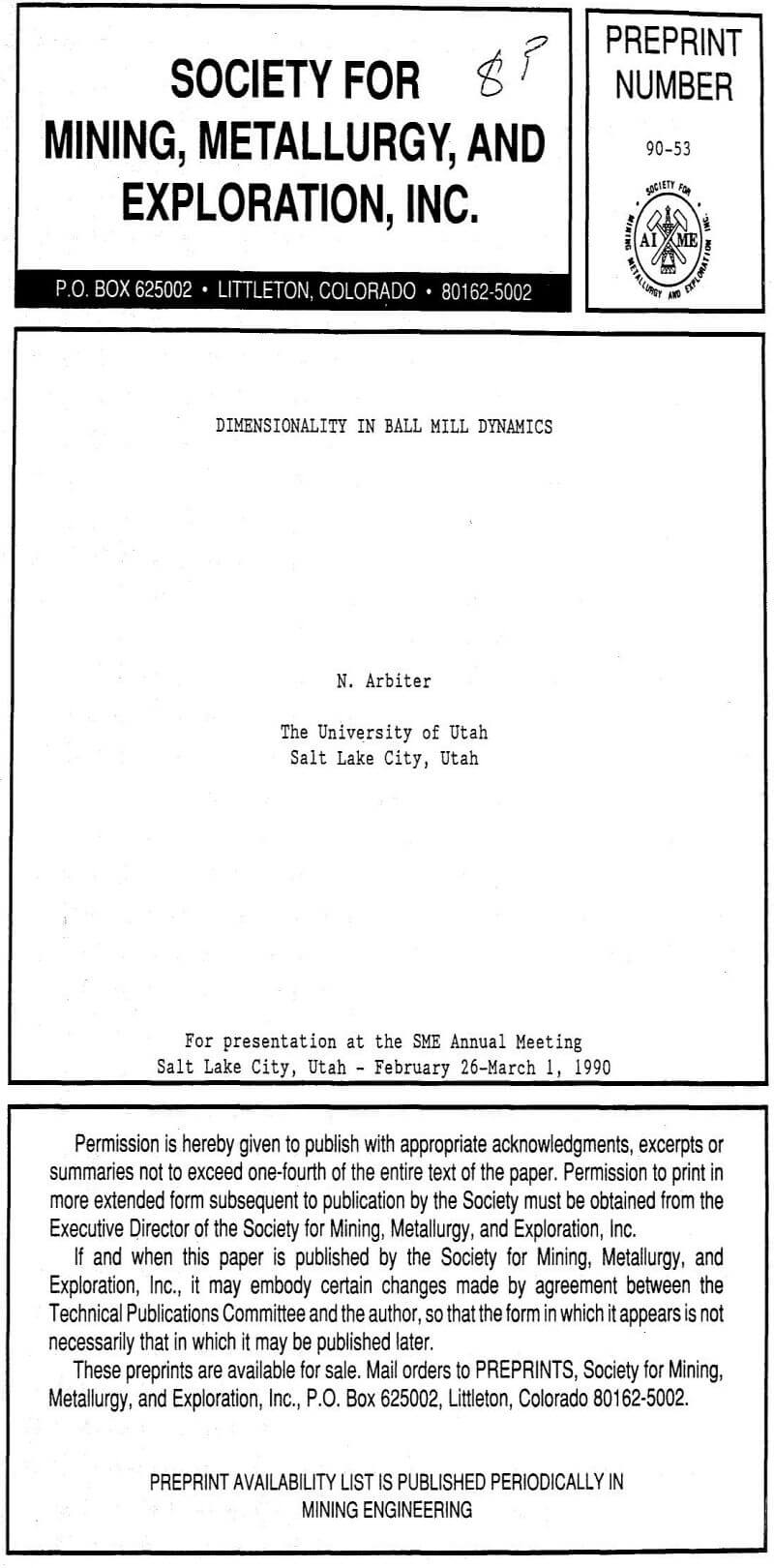Ball mill shape factors in the period prior to 1927 averaged 1.1/1 for 29 center discharge mills and 1.0/1 for 30 peripheral discharge mills. With the resumption of new plant construction after the 1930’s depression, the Morenci concentrator continued the 1/1 ratio with its 3.1 x 3.1 m (10 x 10 ft) mills. The ratio was increased progressively from then on, reaching 1.6 and 1.8/1 for the largest overflow mills currently.
This is in sharp contrast to autogenous and SAG mill shapes for which the ratio averages 0.4 in North America. On the other hand, South African practice, starting at the turn of the century with autogenous mills having 4/1 ratios, moved toward 1/1 until recently, when a 2.5/1 ratio mill was installed.
The reasons given for such divergent practice for mill shape factors are in some respects contradictory, and generally inconclusive. The most complete discussion from a practical viewpoint is limited to primary SAG and autogenous mills. Considerations of ball mill dimensionality have had a two-fold direction. On the one hand, it has been argued that ball mill efficiencies should increase with increasing diameter, and that the specific energy for a particular grind should be reduced accordingly. An inadvertent test of this at the Bougainville operation resulted in drastic under-powering, which led to failure to reach design capacity until additional mills were installed. This can be taken as strong evidence against any increase in efficiency with diameter.
There is a limit to ball mill diameters because of the demonstrable limit to axial flow velocities evident in the overload phenomenon, which as a fact is incontrovertible. But that it places a limit on mill diameters overlooks the evidence given below that appropriate variation in the L/D ratio will permit major increases in diameter, limited only by constructional or economic factors.
The present study was directed toward quantifying the overload phenomenon through examining the influence of mill dimensionality variation and mill operating variables on its occurrence. It is shown that varying the operating conditions, specifically the load fraction and the fraction critical speed, can reduce the risk of overload for existing operations; while appropriate decreases in the L/D ratio can minimize the risk in the design of new circuits.

How Ball Mill Dimensions Affect Overloads
Ball mill overload is a consequence of the approach to a critical velocity with increasing feed rates or circulating loads. Although the effect has been known for over 50 years, there have been no previous attempts to quantify it. The following description of the ball mill as a flow system is the preliminary to a quantitative analysis:
- In the absence of a ball load, axial flow of pulp through a mill resembles open channel flow, except for disturbances near the shell due to shell/lifter rotation.
- For a given ball load (Lf), the void fraction available for pulp hold-up (H) for the ascending portion of the load is approximately 0.4 Lf. In the descending portion, it will be greater than this, and increases with fraction critical speed (Fc), because of load expansion.
- Increasing the feed rate increases pulp hold-up, and will progressively fill the available void space. At a critical flow rate, which depends on system geometry, hydraulic head, and pulp rheology, void filling reaches its limit; a pool forms rapidly, and fills available space outside the ball load and up to the overflow level. Prior to this, pulp is discharged mainly along the ascending rim of the overflow.
- For a small mill, it has been shown that with increasing feed rates the critical filling is at or near 50 percent of the mill volume. Power drops rapidly when this is reached, as required by the torque formula.
- The transition to overload is associated with the following phenomena:
a) The decrease in power draw.
b) Damping of mill sound.
c) Reduced comminution of coarser feed sizes, probably due to reduced direct impact in the presence of a pool.
d) Increased circulating loads, which further intensify the overload, and increased density of cyclone underflows, which can lead to roping.
e) Conditions beyond overload are not known because feed rates are not deliberately increased beyond this point.
f) The existence of the phenomenon limits the capacity of a mill with a fixed set of operating conditions and can prevent the balancing of hard ore feed rate decreases by increases in soft ore rates.
